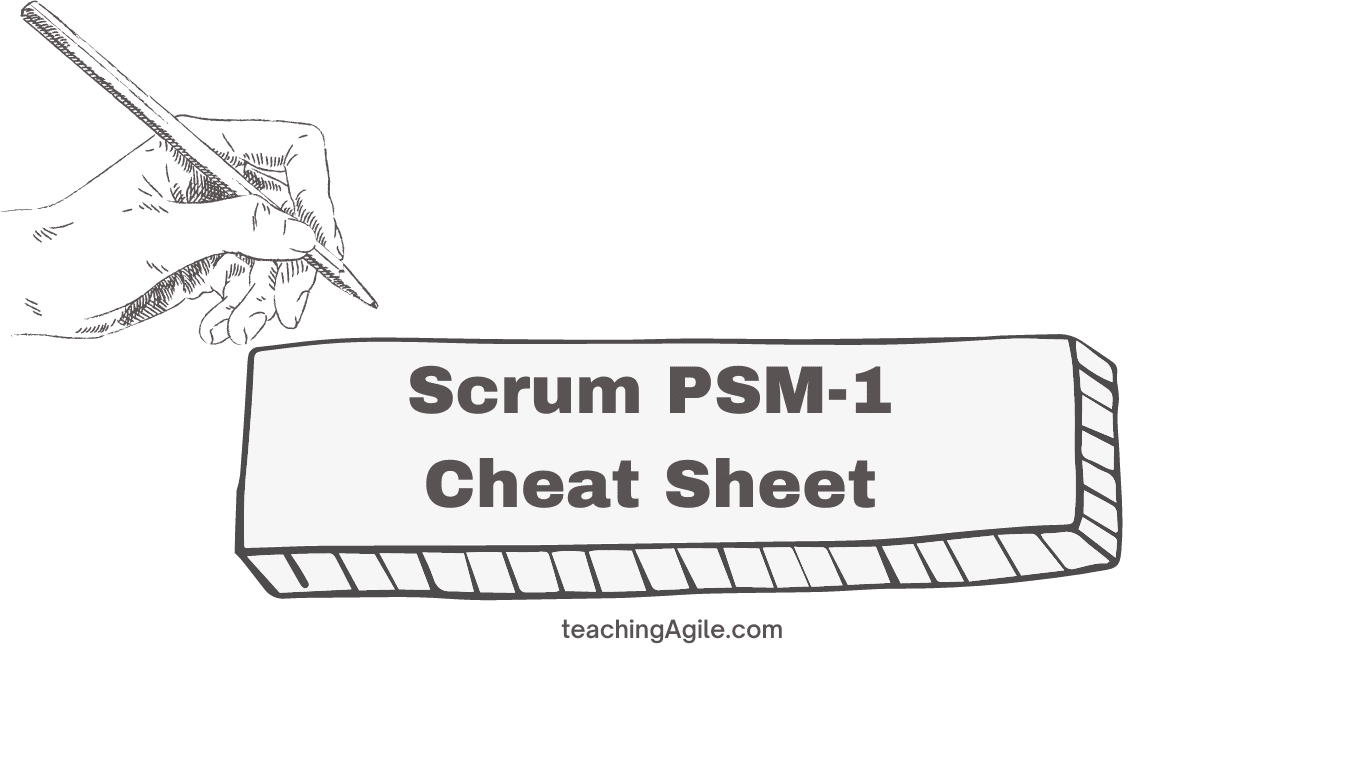
Scrum PSM 1 Cheat Sheet: Ace Your Exam with Confidence
This Scrum PSM 1 cheat sheet is designed to help you prepare for and pass the Professional Scrum Master (PSM 1) certification exam with ease. With detailed explanations, personal experiences, and examples, you'll be well-equipped to tackle the test. We've included internal links to key topics and placeholders, so you can easily navigate through the content.
 Scrum PSM 1 Cheat
Sheet: Ace Your Exam with Confidence
Scrum PSM 1 Cheat
Sheet: Ace Your Exam with Confidence
Table Of Contents-
Scrum Framework
Scrum is an Agile framework that focuses on iterative and incremental development. It's designed to manage complex projects and adapt to changing requirements. The Scrum Framework comprises three main components: scrum roles, scrum artifacts, and scrum events. We'll cover each of these components in more detail below.
Scrum Roles
There are three primary roles in Scrum: Product Owner, Scrum Master, and Development Team. Each role has distinct responsibilities and contributes to the overall success of the project.
-
Product Owner: The Product Owner is responsible for maximizing the value of the product by managing the Product Backlog, prioritizing items, and working closely with the Development Team.
-
Scrum Master: The Scrum Master is a servant-leader who facilitates Scrum events, removes impediments, and coaches the team to adhere to Scrum principles.
-
Development Team: The Development Team is a self-organizing, cross-functional group responsible for delivering high-quality, potentially releasable increments at the end of each Sprint.
Scrum Artifacts
Scrum artifacts provide transparency and opportunities for inspection and adaptation. The three main artifacts are:
-
Product Backlog: A prioritized list of features, enhancements, and fixes required for the product, managed by the Product Owner.
-
Sprint Backlog: A subset of the Product Backlog selected by the Development Team for the current Sprint, along with a plan to deliver the Increment.
-
Increment: A potentially releasable, usable, and valuable piece of the product, resulting from the work completed during the Sprint.
Scrum Events
Scrum events, or ceremonies, provide a structured approach to inspection, adaptation, and planning. The main Scrum events are:
- Sprint: A time-boxed period (usually 2-4 weeks) during which the Development Team works to complete a potentially releasable Increment.
-
Sprint Planning: An event at the beginning of each Sprint where the Scrum Team collaboratively plans the work for the upcoming Sprint.
-
Daily Scrum: A daily, 15-minute time-boxed event for the Development Team to synchronize their work and plan for the next 24 hours.
-
Sprint Review: A time-boxed event at the end of each Sprint to inspect the Increment and adapt the Product Backlog as needed.
-
Sprint Retrospective: An event after the Sprint Review to reflect on the past Sprint, identify improvements, and create a plan for implementing them in the next Sprint.
Scrum Rules
Scrum rules ensure that the Scrum framework is followed correctly and effectively. Some key rules include:
-
The Scrum Team must always strive for transparency and continuous improvement.
-
Scrum events are time-boxed, and their durations cannot be extended.
-
The Development Team must be self-organizing and cross-functional.
-
The Scrum Master should coach and facilitate the team without taking on decision-making authority.
Scrum Metrics
Scrum metrics help track progress and performance, identify areas for improvement, and promote transparency. Common Scrum metrics include:
-
Velocity: The average number of story points or backlog items completed per Sprint.
-
Burndown Chart: A graphical representation of work remaining versus time in a Sprint.
-
Burnup Chart: A graphical representation of work completed versus time in a Sprint.
-
Cycle Time: The time it takes for a backlog item to move from start to finish.
Important Scrum Terms
Familiarize yourself with these key Scrum terms to better understand the Scrum framework and improve your chances of passing the PSM 1 exam:
-
User Stories
-
Time-boxing
-
Empirical Process Control
-
Technical Debt
Exam Tips and Tricks
-
Study the Scrum Guide: The Scrum Guide is the primary source of Scrum knowledge and the basis for the PSM 1 exam. Ensure you read and understand it thoroughly.
-
Practice with Mock Exams: Take advantage of online mock exams to familiarize yourself with the exam format and identify areas where you need to improve.
-
Understand Scrum Principles and Values: The PSM 1 exam tests your understanding of Scrum principles and values, so make sure you have a strong grasp of them.
-
Don't Rely Solely on Personal Experience: While personal experience can help, the PSM 1 exam is based on the Scrum Guide, so focus on learning the Scrum framework as outlined in the guide.
With this comprehensive Scrum PSM 1 cheat sheet, you'll be well-prepared to tackle the certification exam and become a Professional Scrum Master. Good luck!